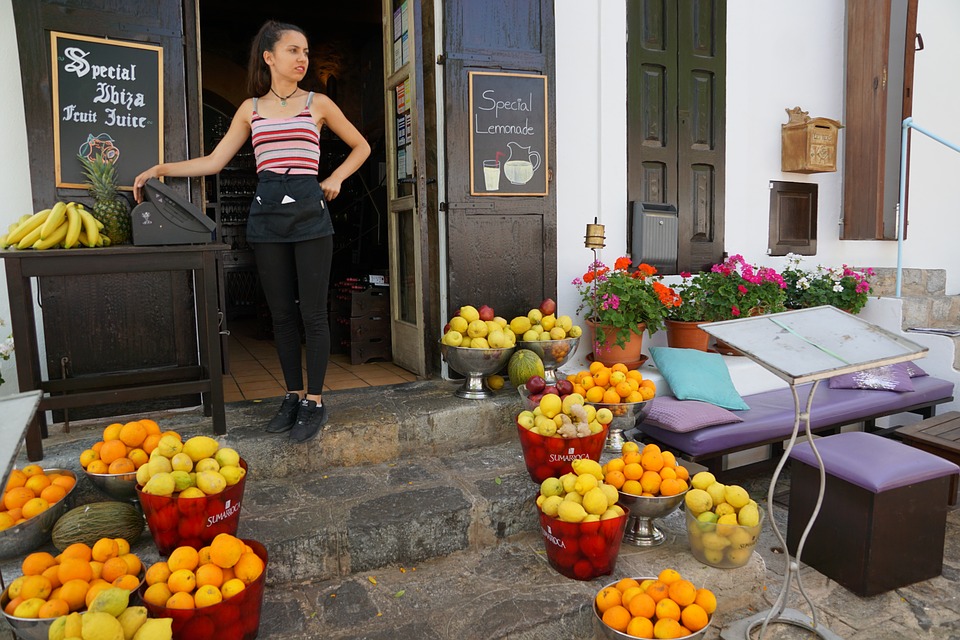If you’re vegetarian and travelling to a country in Europe for the first time, how will you fare? The answer is that wherever you go, you can be sure to find plenty of vegetarian and vegan restaurants.
But as a non-meat-eater myself, I prefer to experience more than just specific vegetarian restaurants and it’s easy to do throughout Europe.
It’s well worth bookmarking this site on your phone though, as it lists vegetarian and vegan restaurants throughout the world. Or you can download the app here.
If you’re travelling from North American it’s good to know that a vegetarian lifestyle was comparatively late arriving in the USA so you’ll have no problems in Europe. In addition to the large number of specialist vegetarian and vegan restaurants, take a look at the following ideas:
- Look for Italian restaurants. They invariably serve several meat-free dishes
- Asian restaurants are often the same – Chinese, Indian, Pakistani…
- Breakfasts are often meat-free in Europe. A typical ‘continental breakfast’ of croissants, local butter and jams from the region is hard to beat
- For lunches, it’s wonderful to buy local produce – crusty bread, local cheeses and so on – to create your own picnic in a nearby beauty spot
- In some restaurants, even those that specialise in meat such as grill houses, then the answer can be to do as I often do – order a meat free appetiser (or two) as your main course
- Unless you’re vegan, avoid telling people that you’re vegetarian as it might get lost in translation. It’s better to say ‘I don’t eat meat or fish, cheese and eggs are fine’. Otherwise, you might get a plate of nothing but vegetables when you’d really have loved a creamy pasta dish
- Fruit is easy to come by just about everywhere as are fresh vegetables. Shopping at local markets is a lot of fun
- Pizzerias are not just limited to Italy and it’s easy to get vegetarian pizzas almost everywhere
- Kebab houses and Middle-Eastern restaurants are likely to serve delicious falafel. Mexican restaurants offer meat-free dishes too
It’s a great idea to have a good translation app on your phone. Many people in Europe speak at least a little English but having ‘I don’t eat meat or fish’ or ‘I am vegan and eat no animal products’ stored on your phone in the country’s language can be a great help. We recommend this translation app.
It’s well worth researching local specialities before you go – most regions in Europe have their own local cheeses or produce. You’ll also find local honeys, preserves, baked goods and regional dishes that contain no meat or fish.
Each country has restaurants and cafés that are more likely to provide vegetarian dishes. For example, in pubs in the UK you’ll find anything from the traditional Ploughman’s Lunch (bread, cheese, pickles and fresh salad vegetables) to dishes that could be considered fine dining. (Check out gastro-pubs – they often serve the best food).
Remember that you don’t have to explain to anyone why you don’t eat meat or fish. With language difficulties your explanation might not be properly understood and getting into a heated discussion about the rights and wrongs of eating meat are never a good idea – especially when there are language problems.
Program phrases into your translation app such as ‘I have a special diet from my doctor’ or ‘I have a medical condition’. This will avoid any awkward questions or discussions. Even the most hardened meat eater will respect a medical problem.
ARTICLE BY:

Jackie
JJ is originally from the UK and has lived in South Florida since 1994. She is the founder and editor of JAQUO Magazine. You can connect with her using the social media icons below.

